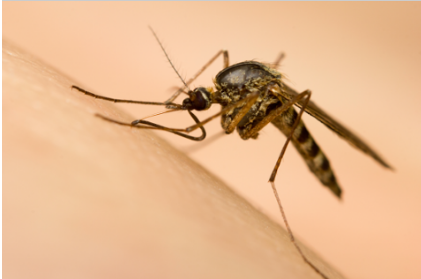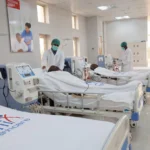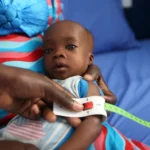When 22-year-old Ifeoma Adindu fell ill in late June, her family never imagined it was anything beyond the familiar symptoms of malaria or typhoid.
While her final exams loomed, she was battling a fever so high it left her head pounding and her skin burning with rashes.
“I took antimalarial drugs, I did blood tests, I even received drips,” she recalls. “One result said I had malaria, another claimed I had a blood infection. But nothing worked. I kept getting worse. I thought I was going to die.”
Weeks later, wasted and frail, she finally sought help at a specialist clinic in Awka. Here, the diagnosis showed that Adindu was suffering, not from malaria or typhoid, but from dengue fever, a name that sounded Greek to her.
Adindu’s story mirrors an unravelling trend across Nigeria. Dengue fever, spread by the Aedes mosquito (the same vector for yellow fever and Zika), has long been confined to Asia and Latin America.
But climate change, poor sanitation and stagnant waste across are helping the mosquitoes breed in Nigeria’s cities and villages.
The World Health Organisation estimates nearly 400 million infections worldwide every year, with Africa’s burden rising fast.
But most of these cases slip through the cracks because the symptoms of dengue fever—fever, rashes, body pain and nausea—so closely resemble malaria.
As such, many families, like Ifeoma’s, spend weeks chasing the wrong treatment until the illness turns severe. The Nigeria Centre for Disease Control now describes dengue as a re-emerging threat that can become fatal if ignored.
Amidst the threat, a variety of solutions are unfolding across Nigeria and beyond.
First is early awareness. For decades, doctors in Nigeria have been trained to see malaria as the default diagnosis for fever. But places like Singapore and Brazil, where dengue is a yearly menace, show what is possible when governments invest in rapid diagnostic tests and strong laboratory networks.
In Nigeria, that shift is slowly beginning. The NCDC has added dengue into its disease surveillance framework, as health experts call for rapid diagnostic kits in every primary healthcare centre.
This ensures that, upon the first sign of fever, patients like Adindu can be tested and diagnosed correctly within hours, rather than subjected to weeks of trial and error. Accurate diagnosis could turn stories of near-death into swift recoveries.
Communities, too, are proving powerful in the fight. In Lagos slums, civil society groups like the Health Awareness Nigeria Initiative have launched clean-up campaigns, teaching families to drain stagnant water, cover storage containers, and clear blocked gutters.
These small acts echo Singapore’s heavy-handed measures, in which households face fines if they allow mosquitoes to breed in their homes. Meanwhile, Brazil has gone further, releasing genetically modified mosquitoes to curb populations.
Nigeria may not yet be ready for such advanced methods, but scaling up its grassroots campaigns could dramatically shrink mosquito habitats and prevent infections before they start.
Yet boosting awareness is perhaps the greatest solution to counteracting the spread of dengue. When reporters visited markets in Lagos, traders mistook dengue for “a new kind of COVID-19,” fearing another lockdown. Such ignorance is dangerous.
Public education through schools, churches, mosques, radio jingles and town hall meetings could transform that fear into awareness, teaching people to spot symptoms and take precautions.
Globally, the WHO has set a target to cut dengue deaths by 25% and infections by 50% by 2030. Nigeria, by joining international collaborations, investing in awareness campaigns, and funding its healthcare system, can meet that target.
Following her slow and painful journey back to health, Adindu maintains that if she had known what dengue was, maybe she wouldn’t have waited so long.
Ifeoma Adindu, a final-year student, suffered a severe illness initially misdiagnosed as malaria or typhoid, revealing the misperception of dengue fever in Nigeria. Her story highlights the growing threat of dengue, a mosquito-borne disease increasingly prevalent due to climate change and poor sanitation. It's often confused with malaria due to similar symptoms like fever and body pain, leading to incorrect treatments. This misdiagnosis is a common issue for many Nigerian families.
With dengue fever emerging as a re-emerging threat, Nigeria's healthcare system is beginning to implement changes, such as integrating dengue into disease surveillance and advocating for rapid diagnostic kits in primary centers. Community-driven clean-up campaigns are reducing mosquito breeding grounds, echoing other countries' success. Global awareness and local education efforts are crucial to understanding and preventing dengue, and Nigeria aims to significantly reduce dengue-related deaths and infections by 2030. Public education and early diagnosis can facilitate swift recoveries, preventing severe cases.






